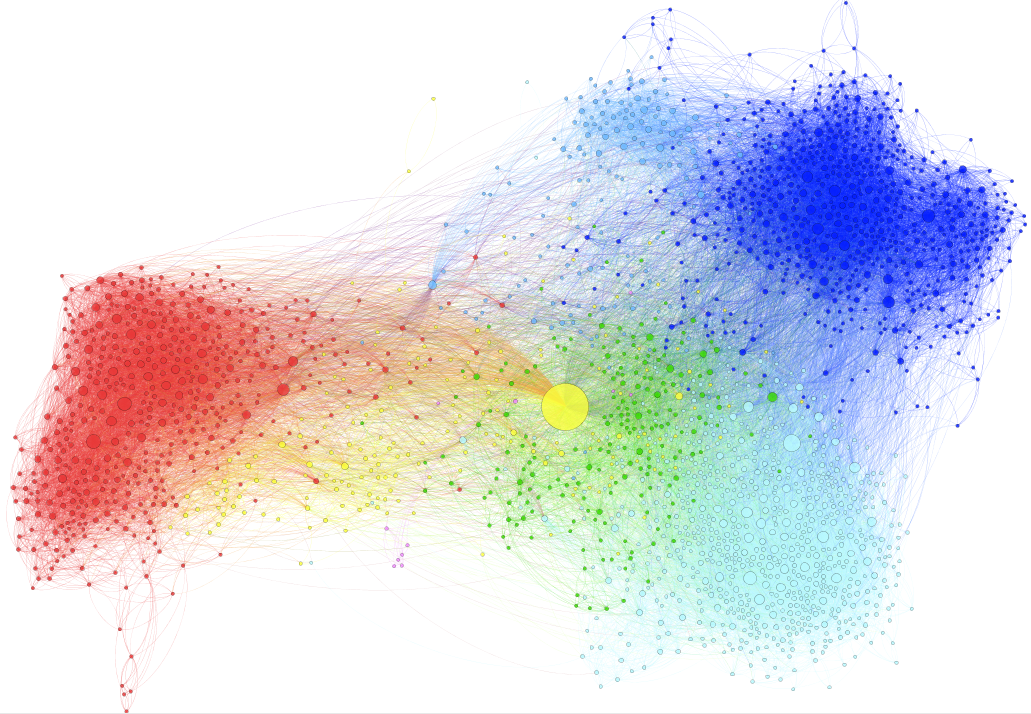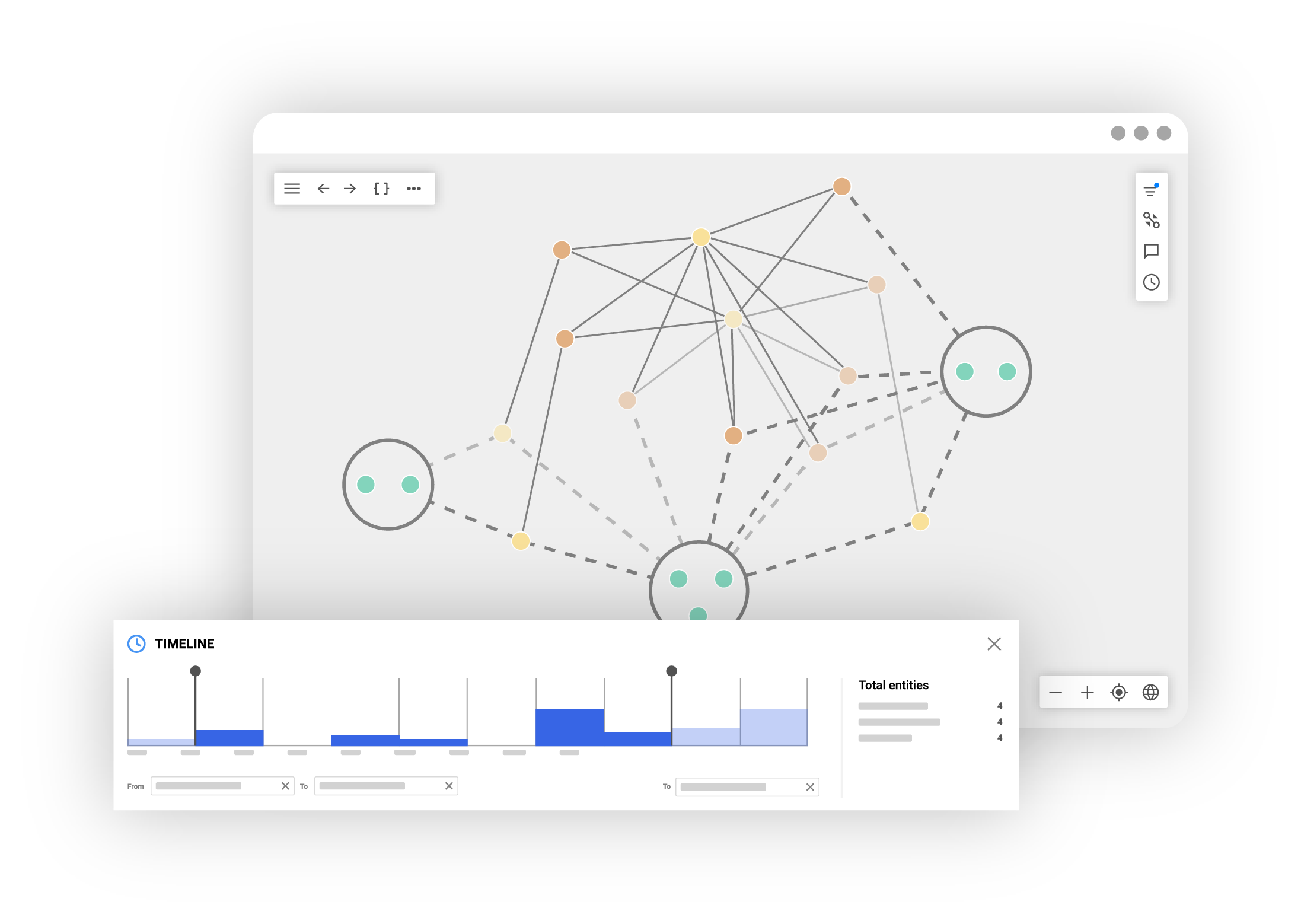Gephi is an influential, early open-source network visualization and analytics software that has been - and still is - used in many projects all over the world in academia, journalism, and beyond. Gephi also shares some history with Linkurious, which was founded in 2013. (We recently did an interview with Linkurious CEO and co-founder Sébastien Heymann - also an early member of the Gephi team - to learn more about that story. Read it here.)
These two softwares occupy different niches in the graph visualization space. What are the differences between them? Which use cases, and what type of users, are each tool suited for? Read on to learn how Linkurious and Gephi compare.
Gephi is a free, open source visualization and exploration software for all kinds of graphs and networks. It was created in 2006 as an internal graph visualization and analytics project, which eventually gained many users after its public release. The software has been downloaded over 1 million times since its creation.
Gephi is used for many types of applications, from exploratory data analysis to link analysis to social network analysis (SNA), and has been applied in journalism, academia, and beyond. For data analysts using Gephi, it enables them to intuitively reveal patterns or trends, highlight anomalies, and tell stories with their data.

Gephi and Linkurious share a co-founder, and in some ways a foundational vision: bringing graph to a larger number of users. But the two graph visualization and analytics solutions had their differences from the outset, and each has evolved in different directions, fulfilling different needs, and generally appealing to different types of users. Both tools have an important role to play in their own right.
To give you a better understanding of where both Gephi and Linkurious sit within the graph technology landscape, let’s take a look at what each one does, and the use cases for which they are best suited.

Gephi works particularly well for social scientists, beginners in network analysis, and single analysts with a different dataset for each investigation. It performs particularly well for social network analysis, network science, data journalism, search engine optimization (SEO), and social media listening.
It’s a free software that you can easily install on multiple platforms, making it one of the few inexpensive options for teaching, workshops, etc. The fact that it is free and open source also means it’s great for academic researchers or isolated professionals.
Gephi is well suited as an all-around tool that allows beginners to understand the gist of network exploration. Part of its appeal is that it renders graphs beautifully. It’s able to create a real “wow” effect for graphs of up to 100,000 nodes.
Finally, there is a large community around Gephi, notably on Facebook, where users can ask questions and get help for their graph projects.
There are drawbacks to using Gephi. It’s an open source project with limited maintenance that has had just one major release within the past 10 years, and can therefore be prone to crashes or even security issues.
Gephi also has technical limitations. It’s designed as a desktop application for single users, so it isn’t suitable for teamwork. It can’t scale to large graphs since it loads the whole network in memory and displays it, slowing down the application. Gephi also displays entire graphs, meaning there are plenty of useless data points that can create cognitive overload.
Gephi also has limited monitoring and analytics capabilities. There are no rules-based alerts. And, it’s a point and click exploration tool only, so it’s not possible to query data based on complex patterns. Data is stored in files only, it’s not possible to store it in graph databases.
Unlike Gephi, Linkurious was founded with the goal of putting graph visualization and analytics into the hands of more users. In the case of Linkurious’s flagship software, it does this by making powerful graph capabilities accessible to businesses so they can get value out of their connected data. Linkurious is suited for use cases that require advanced analysis of complex, connected data: tracking down politically exposed persons, investigating networks of fraudsters, optimizing supply chain operations, and more.
Part of the way Linkurious makes graph accessible to businesses is by providing a software that is designed with both technical and non-technical users in mind. The intuitive interface is easy to use, putting the ability to glean insights from connected data directly into the hands of business users. It also has built-in team and collaboration features, making it easy to share assets, share findings, collaborate with team members on visualizations, and more.
Linkurious also comes with advanced analytics tools, letting users quickly find the information they need within their connected data. It’s easy to query data within Linkurious to go straight to information of interest, even in very large graphs. Advanced alerting combines signals across the graph, delivering a great deal of nuance and context to analysts and investigators. Users can gain additional context in their graphs using plugins or custom actions.
The price tag of Linkurious can be a drawback for some: it is primarily a business tool, rather than a tool for individual researchers for example. (The software is available for free to certain qualifying NGOs through the Linkurious for Good program, though). But the price tag also comes with constant innovation based on the needs of Linkurious users.

While Gephi and Linkurious share common roots, they have evolved to serve different needs in the graph technology market. Gephi remains a valuable, free tool for individual researchers, academics, and beginners in network analysis, offering an accessible entry point into graph visualization. On the other hand, Linkurious Enterprise has developed into a robust, enterprise-level solution, catering to businesses that require advanced analytics, collaboration features, and the ability to handle large-scale, complex data sets.
Both tools play important roles in their respective domains, with Gephi excelling in educational and small-scale research contexts, and Linkurious Enterprise meeting the demanding needs of corporate environments and sophisticated data analysis.
A spotlight on graph technology directly in your inbox.